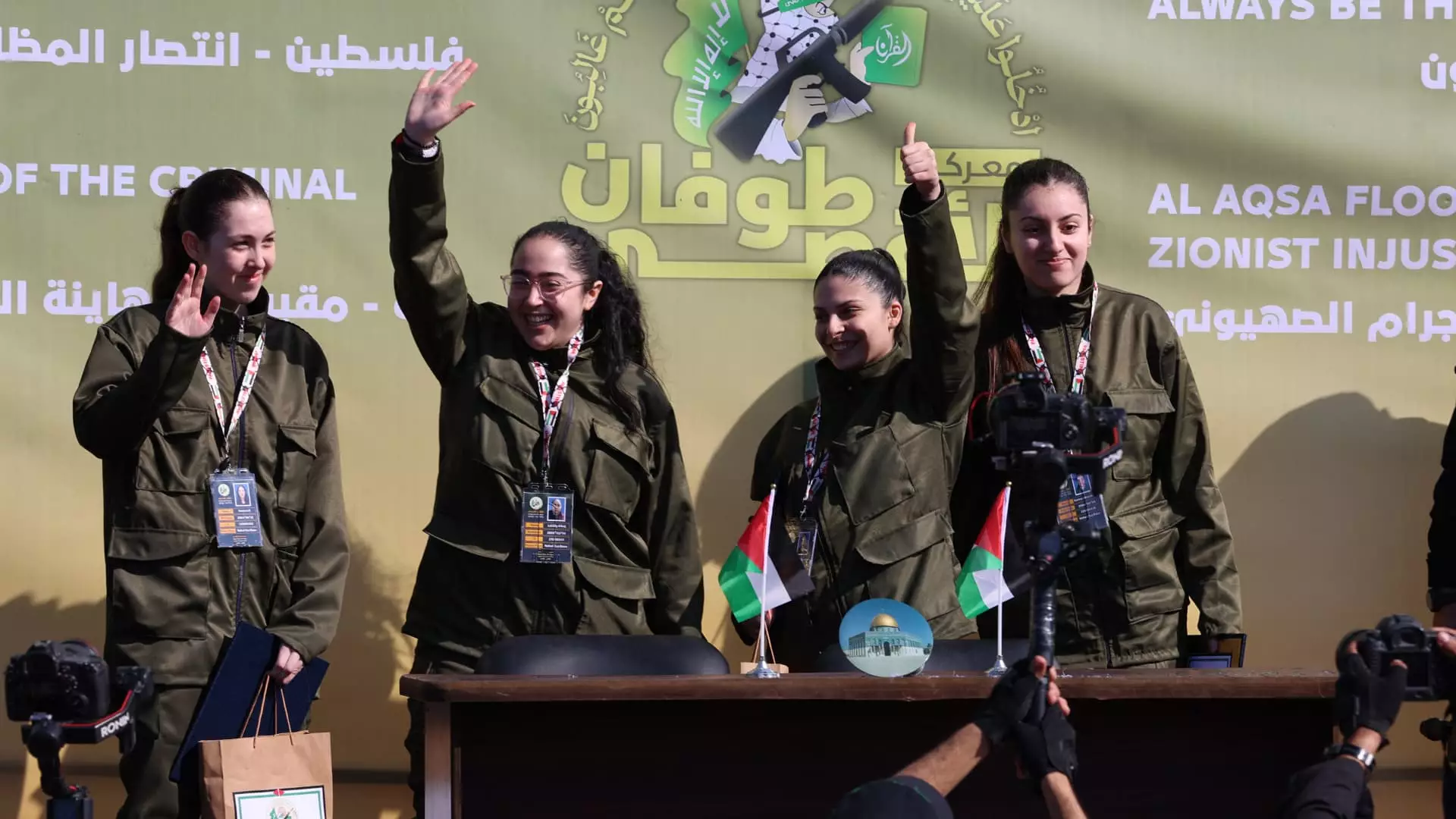The dynamics surrounding the Israeli-Palestinian conflict are often characterized by a tapestry of sorrow, hope, and political maneuvering. Recent events have highlighted both the humanity and the complexity embedded within these struggles. The recent release of four Israeli female soldiers by Hamas in exchange for approximately 200 Palestinian prisoners serves as a significant yet intricate milestone in the ongoing dialogue of hostages and prisoners amid a fragile ceasefire.
A Symbolic Exchange: The Narrative of Hostages
On Saturday, four Israeli soldiers—Karina Ariev, Daniella Gilboa, Naama Levy, and Liri Albag—were freed by Hamas in a highly publicized exchange that took center stage amid the war-torn backdrop of Gaza. This event was marked by the presence of armed Hamas personnel, and the soldiers appeared smiling and waving to a supportive crowd that had gathered, illustrating a moment of joy amid ongoing despair. For their families and loved ones watching from a distance, the moment was undeniably emotional, filled with tears of relief and celebration. The joyous reception in Tel Aviv, where crowds gathered at Hostages Square, further emphasized the emotional weight of this exchange, as families were able to reconnect after a prolonged traumatic separation.
However, this narrative of triumph was tempered by the disappointment felt in both Israel and among the families of other hostages. A female civilian who was also anticipated to be released on the same day was not, creating a heightened sense of tension and urgency. The Israeli military’s assertion that this situation represented a breach of the truce stands in stark contrast to Hamas’s explanation of a “technical issue.” This discord between the parties further complicates the fragile peace negotiations and speaks to the underlying challenges of embarking on a comprehensive resolution to the ongoing conflict.
The ceasefire agreement was reached after extensive negotiations, mediated primarily by Qatar and Egypt, and has introduced an unusual pause in what had become relentless aggression over the past 15 months. During this period, the humanitarian toll has escalated, with Israeli military actions leading to significant loss of life among Palestinians—over 47,000, according to local health authorities. The lament of civilian suffering stands in stark contrast to military objectives, and the human cost continues to weigh heavily upon the shoulders of both communities.
The complexity of the situation deepens with the knowledge that many of those 200 Palestinian prisoners being released were not merely individuals arrested on minor charges but rather convicted militants implicated in attacks that resulted in substantial casualties. Within Israel, this raises questions about justice, security, and the presence of ongoing threats. While the immediate release of hostages may yield temporary relief and joy, it does not erase the underlying conditions that perpetuate the cycle of violence and retribution.
As negotiations continue, several key elements will shape the future of these delicate discussions. The nature of the hostages remaining in Gaza, categorized by age and conditional factors, complicates matters further. The Israeli government has indicated that negotiations will progress to address the military-age men who are still held. Additionally, the potential for further military actions or retaliatory measures always looms large, revealing the inherent volatility within the region.
Moreover, the implications of this exchange reach beyond the immediate exchange of hostages—rooted in a need for humanitarian relief and humanitarian law. International actors, including the United States, continue to marginally influence the dialogue, but the reality remains that a true resolution will require a holistic approach that addresses not just the symptoms of the conflict, such as hostage-taking, but also the root causes that fuel resentment and violence.
The release of the four Israeli soldiers is undeniably a moment of reprieve amidst ongoing hostilities, yet it serves as a reminder of the intricate web of emotions, histories, and grievances that define the Israeli-Palestinian conflict. Joy and suffering coexist in an environment where humanitarian needs intersect with political aspirations. As the situation develops, the international community watches closely, yet the path to genuine reconciliation remains fraught with complexity and uncertainty. The hope for a sustained ceasefire and lasting peace lies not only in exchanges of hostages but in the robust pursuit of understanding, dialogue, and mutual recognition.


Leave a Reply